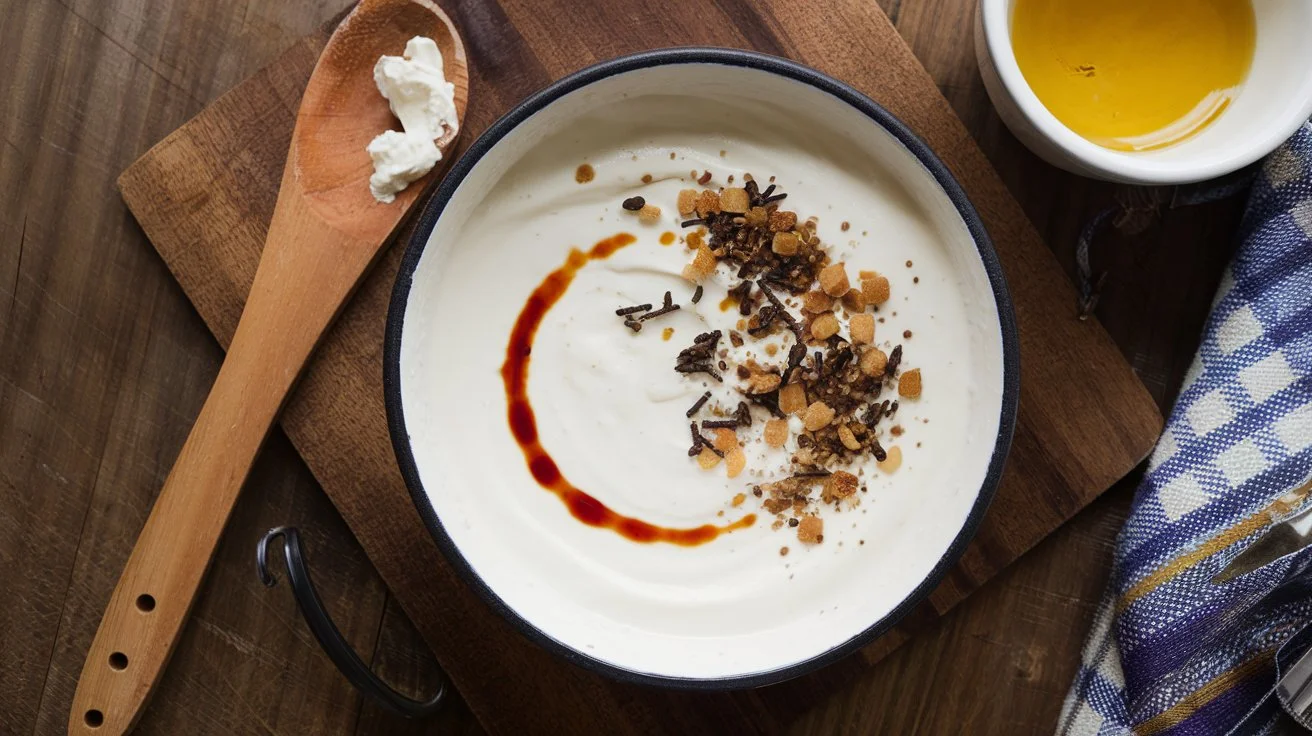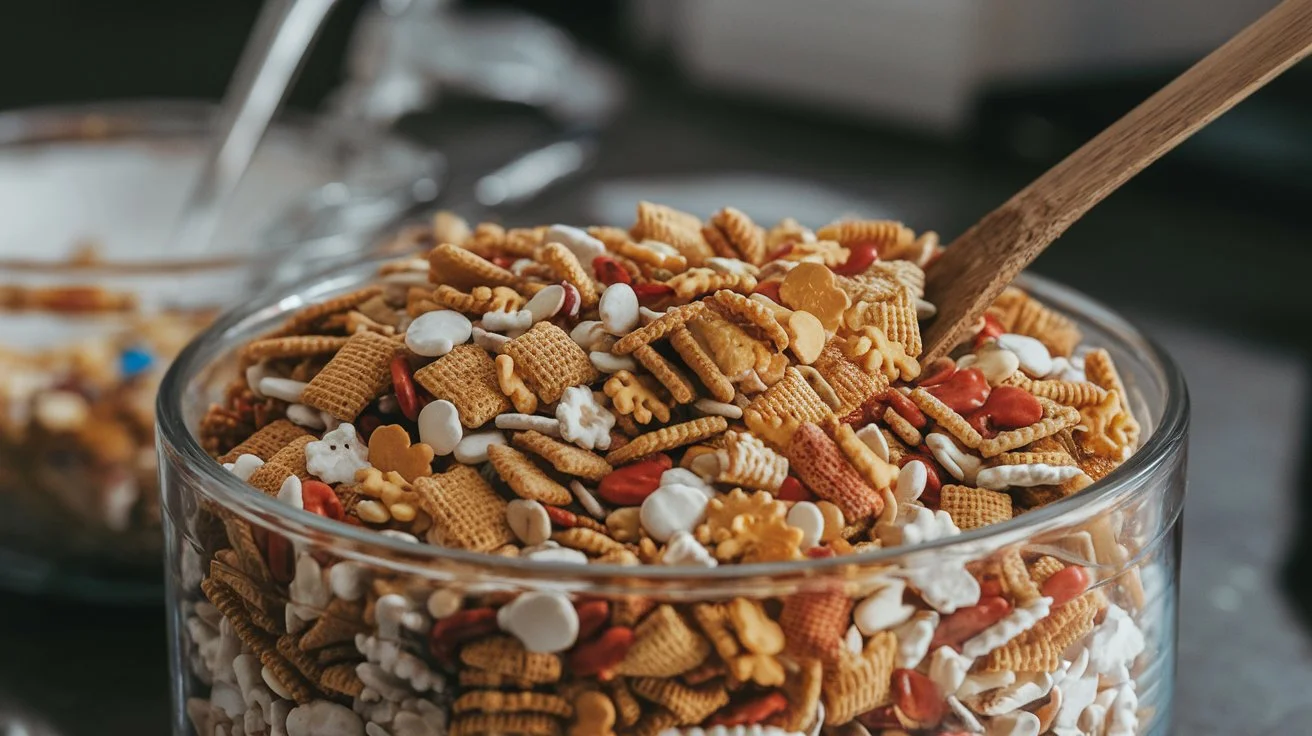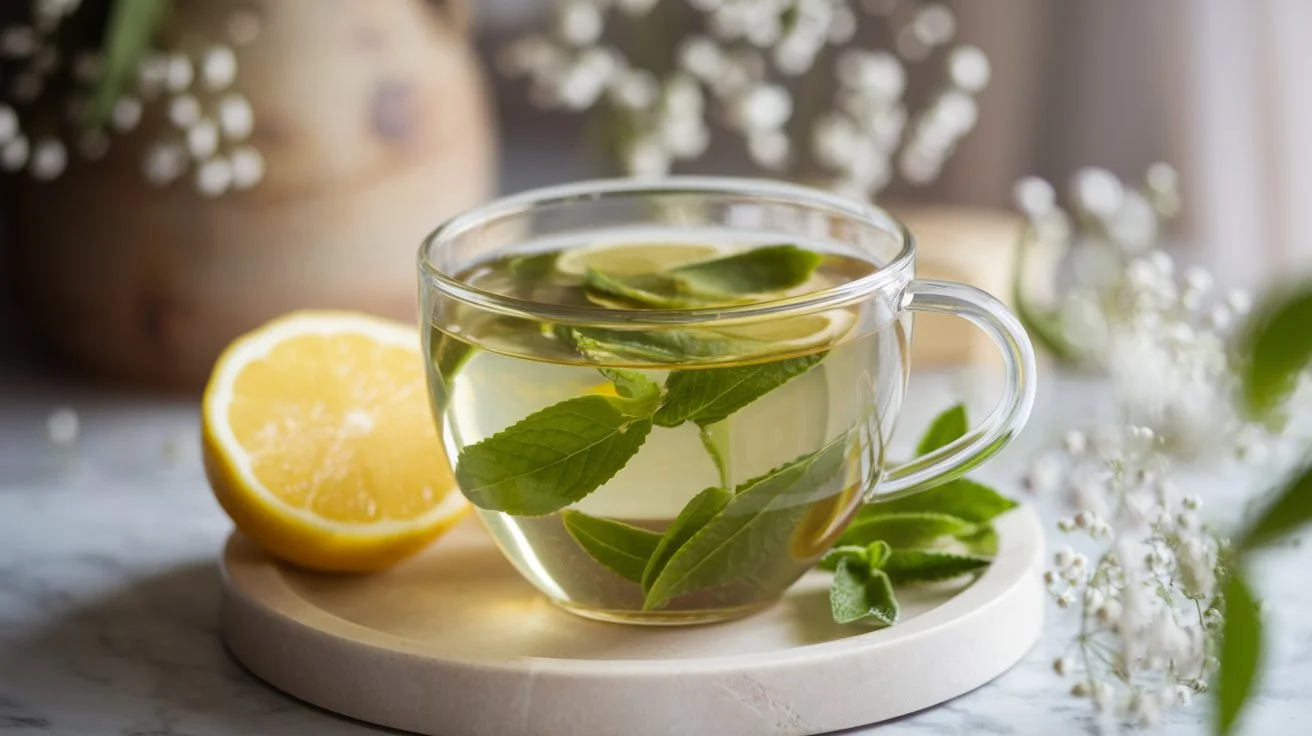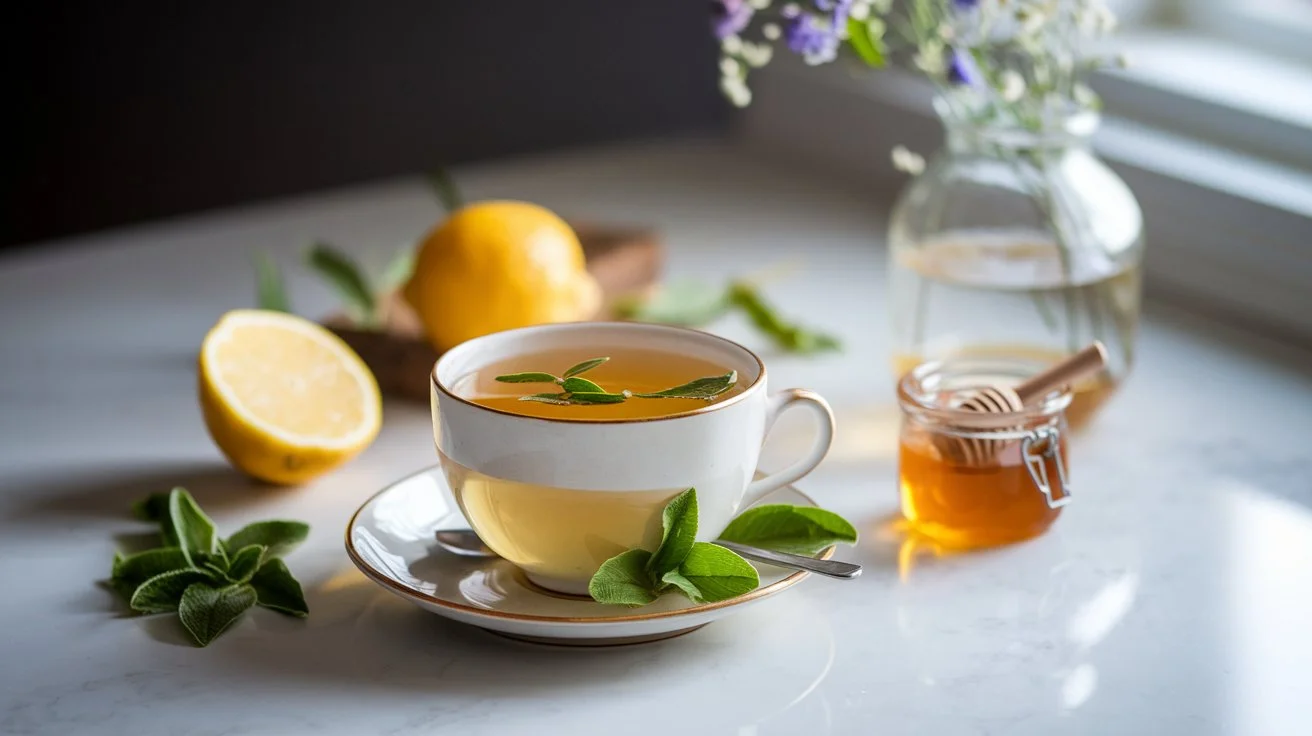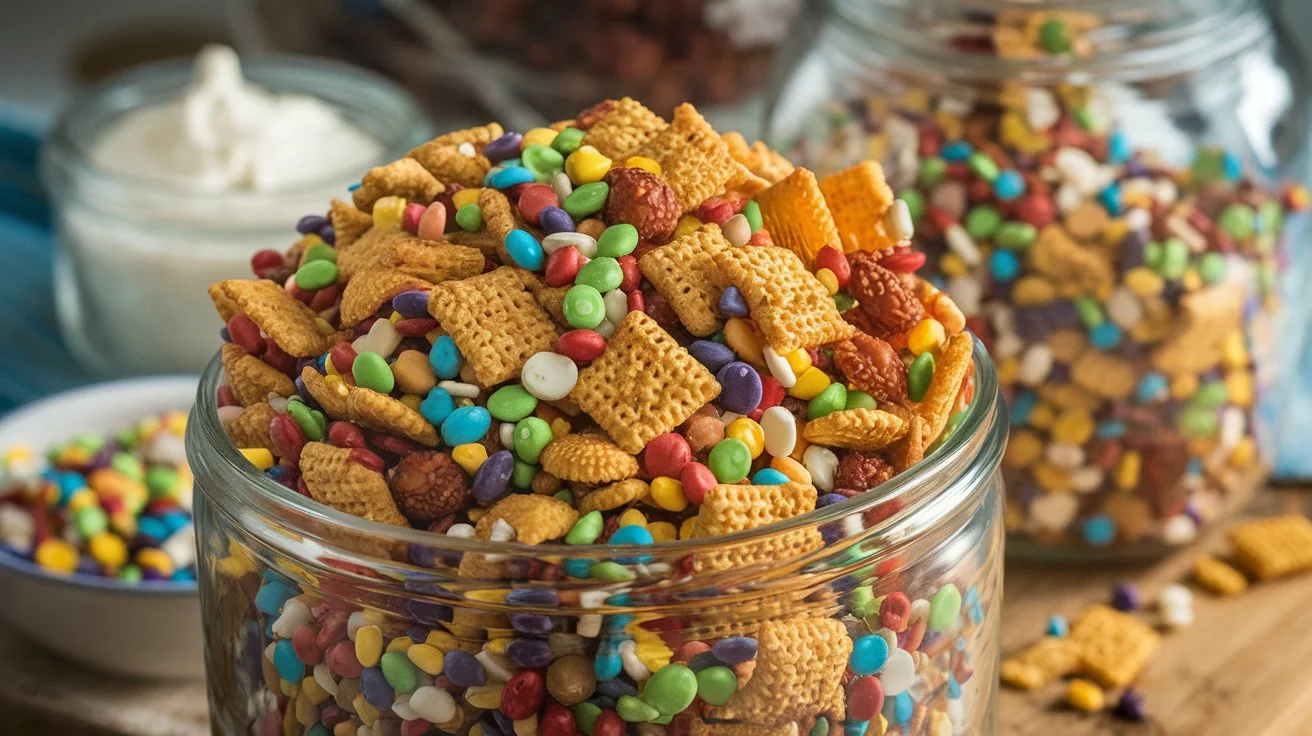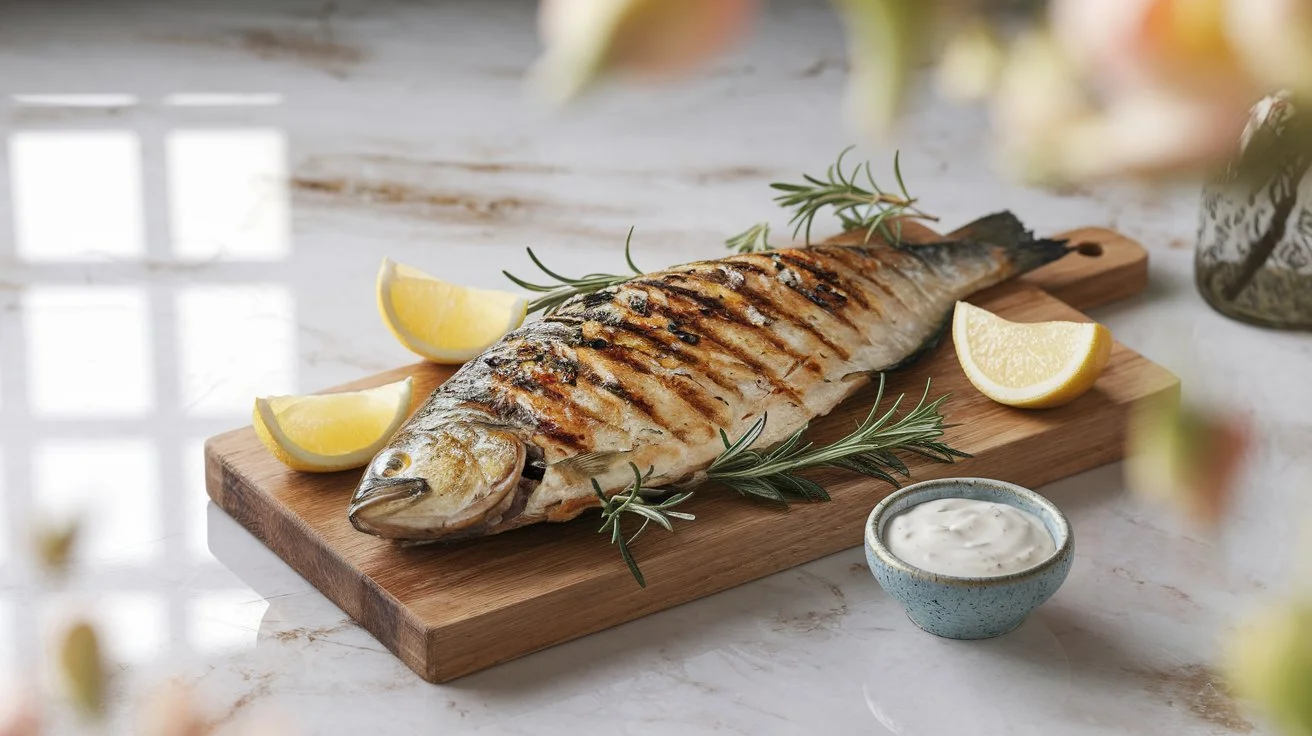Introduction
Have you ever wanted to make your own creme fraiche at home but thought it was too complicated? Well, think again! This step-by-step guide will show you exactly how to create this smooth, tangy, and velvety cream with just two simple ingredients. Forget about rushing to the store every time a recipe calls for it — you’ll soon be able to whip it up in your kitchen.
Making homemade creme fraiche is surprisingly easy, and the best part? It tastes far better than store-bought versions. Whether you want to use it in soups, desserts, or as a fresh topping for fruits, you’ll love having this versatile kitchen essential on hand. So, let’s dive into Part 1 and see what ingredients and tools you need to get started.
Ingredients and Tools for How to Make Creme Fraiche Recipe
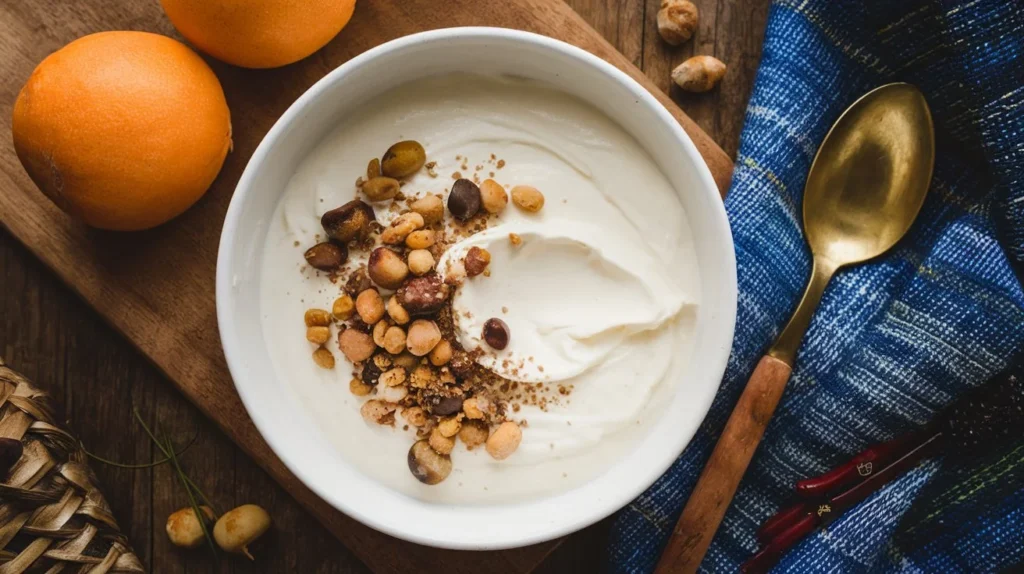
Essential Ingredients for Creme Fraiche Recipe
To make the perfect creme fraiche recipe, you only need two simple ingredients. But not just any ingredients will do — quality matters! Here’s what you’ll need:
1. Heavy Cream
- Why It’s Important: Heavy cream is the base of creme fraiche. Its fat content plays a key role in achieving that rich, creamy texture. Ideally, you want cream with at least 36% fat content. Avoid ultra-pasteurized cream, as it doesn’t ferment as easily.
- Pro Tip: Look for fresh, high-quality heavy cream for the best taste and texture. Organic options often produce better results.
2. Cultured Buttermilk
- Why It’s Important: Buttermilk acts as the “starter” to ferment the heavy cream, giving it that tangy, slightly sour flavor. This magical ingredient contains the live active cultures that transform cream into homemade creme fraiche.
- Possible Substitutes: If you don’t have buttermilk, you can use plain unsweetened yogurt with active cultures as a backup option.
Optional Ingredients for Flavor Variations
While traditional creme fraiche is made with only heavy cream and buttermilk, you can get creative with flavor additions. Add a twist to your creme fraiche with:
- Herbs: Add fresh chives, dill, or parsley for a savory spin.
- Citrus Zest: Lemon or lime zest can brighten up the flavor, especially for dessert applications.
- Spices: A pinch of garlic powder or smoked paprika can transform your creme fraiche into a dip or savory topping.
Kitchen Tools You’ll Need
No fancy equipment is required to make this easy creme fraiche recipe. Most of these tools are already in your kitchen.
1. Glass Jar or Container
- Why It’s Important: Glass jars are non-reactive and allow you to see the fermentation process as it happens. Avoid plastic as it can retain odors or affect the fermentation.
- Pro Tip: Use a jar with a wide mouth for easy stirring and scooping.
2. Spoon or Whisk
- Why It’s Important: You’ll need to combine the cream and buttermilk thoroughly, and a simple spoon or whisk works perfectly.
- Pro Tip: Don’t overmix! A gentle stir is all that’s needed to blend the ingredients.
3. Clean Cloth or Plastic Wrap
- Why It’s Important: To ferment properly, your creme fraiche needs to breathe. A clean cloth or loose-fitting plastic wrap allows air to flow while keeping dust and insects out.
Ingredients and Tools for How to Make Creme Fraiche Recipe
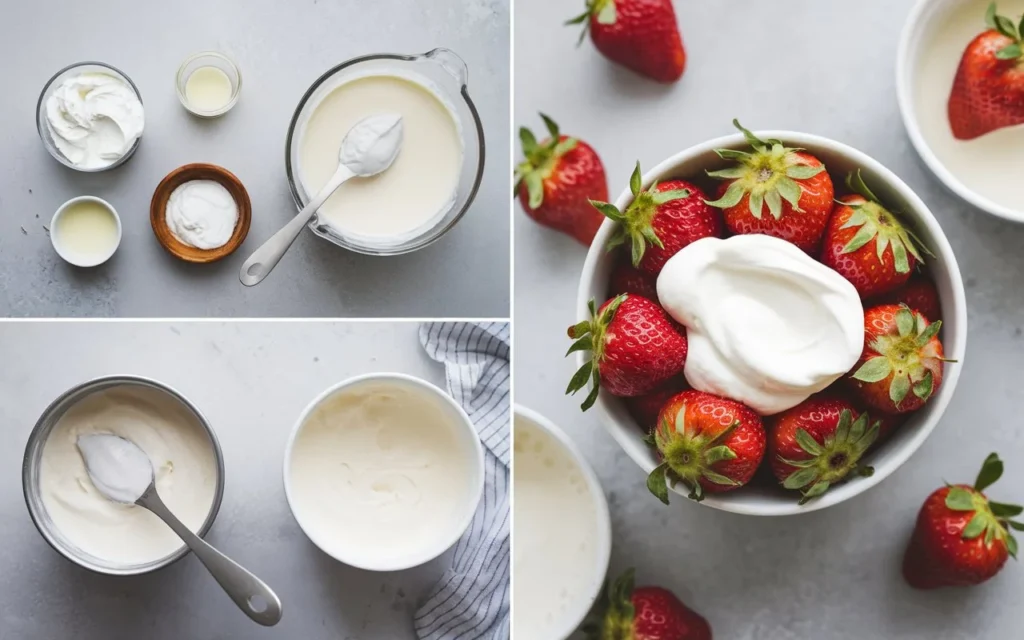
Creating the perfect creme fraiche recipe is simpler than you think, but success starts with the right ingredients and tools. Using fresh, high-quality components and the proper kitchen equipment ensures a smooth, velvety, and tangy creme fraiche every time. Let’s break down everything you’ll need.
Essential Ingredients for Creme Fraiche
To make homemade creme fraiche, you only need two main ingredients. However, the quality of these ingredients matters more than you might expect. Choosing the right cream and starter ensures a rich, thick consistency with that classic tangy flavor.
1. Heavy Cream
Heavy cream is the base of every great creme fraiche recipe, and its fat content plays a vital role in achieving that smooth, luxurious texture. Unlike milk, which is too thin, heavy cream provides the thickness required for successful fermentation.
- What Type of Heavy Cream Should You Use?
Look for fresh, non-ultra-pasteurized heavy cream with at least 36% fat content. Ultra-pasteurized cream has been heated to high temperatures, killing off the natural bacteria needed for proper fermentation. Fresh, full-fat dairy gives you the best results. - Pro Tip: If you only have ultra-pasteurized cream, don’t panic! You can still make creme fraiche, but it may take longer to thicken.
2. Cultured Buttermilk
The magic of creme fraiche happens because of cultured buttermilk, which serves as the “starter” or fermentation agent. It’s packed with live, active cultures (good bacteria) that trigger the fermentation process.
- Why Cultured Buttermilk?
When you combine buttermilk with heavy cream, the bacteria work to ferment the cream, changing its texture from liquid to a rich, spoonable consistency. This fermentation also gives creme fraiche its signature tangy taste. - Can You Substitute Buttermilk?
Yes, if buttermilk isn’t available, you can use plain unsweetened yogurt or sour cream as a substitute. Both contain live active cultures that support fermentation, although yogurt may take longer. For best results, make sure they have “live active cultures” listed on the label. - Pro Tip: If you plan on making creme fraiche regularly, save a small batch of your homemade creme fraiche to use as a starter for your next batch.
Optional Variations for Flavor
If you want to customize your creme fraiche, you can infuse it with extra flavor. Here are a few ideas:
- Citrus Zest: Add lemon, lime, or orange zest for a bright, fresh flavor.
- Herbs: Chopped chives, basil, or dill work well in savory dishes.
- Spices: Garlic powder, smoked paprika, or black pepper create savory versions ideal for dips or spreads.
These additions elevate your creme fraiche, making it more versatile for dips, desserts, or savory meals.
Kitchen Tools and Equipment You Need
Making creme fraiche at home requires just a few basic kitchen tools. You probably already have these items, but knowing why each one is essential will help you avoid common mistakes.
1. Glass Jar or Airtight Container
A clean, glass jar is the best choice for fermenting creme fraiche. Unlike plastic, glass doesn’t hold onto odors or stains, and it allows you to see the process as it thickens.
- Why Use Glass?
Glass is non-reactive, so it won’t interfere with the fermentation process. It’s also easy to clean and sanitize. Airtight jars with a wide mouth make it easy to stir and scoop the creme fraiche when it’s ready. - Pro Tip: If you don’t have a jar, a small glass bowl with a breathable cover will also work.
2. Clean Cloth or Plastic Wrap
After you mix the heavy cream and buttermilk, the container needs to be covered — but not sealed airtight. You want to let in just a bit of airflow to aid fermentation.
- Why Use a Cloth or Loose-Fitting Wrap?
Proper airflow is critical for fermentation. A tightly sealed jar won’t allow gases to escape, and that can prevent the thickening process. A breathable cloth (like cheesecloth) or loosely fitted plastic wrap allows air to move in and out while protecting your creme fraiche from dust and insects.
3. Spoon or Whisk
You’ll need a spoon or whisk to combine the heavy cream and buttermilk. The goal is to mix them evenly without whipping in too much air.
- Why Is This Important?
Proper mixing ensures that the bacteria in the buttermilk spread evenly throughout the cream, allowing it to ferment consistently. Avoid overmixing, as introducing too much air can impact the texture.
Step-by-Step Instructions for How to Make Creme Fraiche Recipe
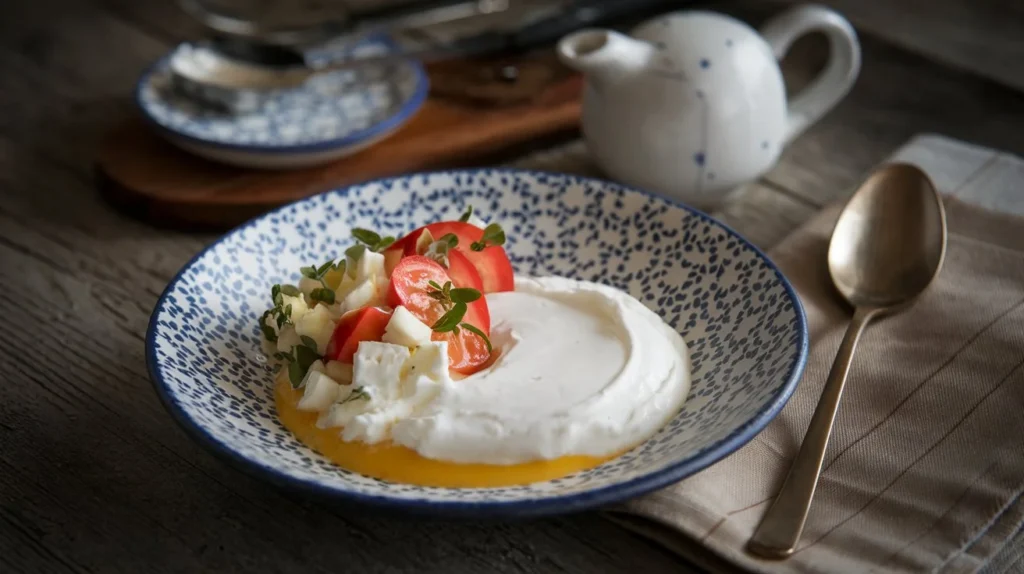
Once you’ve gathered your ingredients and tools, it’s time to bring everything together. This step-by-step guide walks you through each part of the process, ensuring you end up with creamy, tangy, and delicious creme fraiche. No guesswork — just follow these simple instructions, and you’ll be amazed at how easy it is.
Step 1: Prepare Your Ingredients and Tools
Proper preparation is the foundation of any successful recipe, and creme fraiche is no exception. Here’s how to set yourself up for success.
1. Sanitize the Jar and Tools
Before you begin, make sure your jar, whisk, and spoon are all spotlessly clean. Bacteria from dirty tools can interfere with the fermentation process.
- Why Is Cleanliness Crucial?
Since fermentation relies on “good bacteria” from the buttermilk, you don’t want to introduce “bad bacteria” from unclean tools. Washing your jar with hot, soapy water or running it through a dishwasher is recommended. - Pro Tip: After cleaning, let the jar air dry completely to prevent water droplets from diluting the ingredients.
- LSI Keywords: sanitize jar, clean kitchen tools, spotless equipment
2. Measure the Ingredients Precisely
The secret to smooth, thick creme fraiche is the right ratio of cream to buttermilk. For every 1 cup of heavy cream, you’ll need 1 tablespoon of buttermilk.
- Why Precise Measurements Matter
Using too much buttermilk can make your creme fraiche too sour, while too little can prevent it from thickening. Accurate measurements give you consistent, perfect results every time.
Step 2: Mix the Ingredients
Once your ingredients and tools are ready, it’s time to combine them. This is one of the most crucial steps in the process.
1. Combine Heavy Cream and Buttermilk
Pour 1 cup of heavy cream into the clean glass jar, then add 1 tablespoon of cultured buttermilk. This simple combination is all you need to start the fermentation process.
2. Stir Gently (Not Vigorously!)
Use a spoon or whisk to gently stir the mixture. Be careful not to whip or over-mix, as introducing too much air can affect the texture of the final product.
- Why Gentle Stirring Is Important
The goal is to distribute the buttermilk evenly throughout the cream without incorporating air bubbles. Over-mixing can prevent proper fermentation and cause separation. - Pro Tip: Stir slowly for 10-15 seconds until the two ingredients are just combined. The mixture should still be smooth, with no visible lumps.
Step 3: Let It Rest and Ferment
This is where the magic happens! After mixing, it’s time to let your creme fraiche sit and thicken.
1. How Long Does It Take?
Leave the jar at room temperature for 12 to 24 hours. The exact time depends on the temperature of your kitchen. Warmer kitchens speed up fermentation, while cooler ones slow it down.
2. Where Should You Place It?
Place the jar in a warm, draft-free spot away from direct sunlight. Avoid cold places like next to windows or near air vents. Room temperature (around 70°F to 75°F) is ideal for proper fermentation.
3. How Do You Know It’s Ready?
After 12-24 hours, you’ll notice a few key signs that your creme fraiche is ready:
- It has thickened and looks like smooth, creamy yogurt.
- It has a slight tangy aroma, but not a sour smell.
- The mixture no longer flows like a liquid.
If these signs are present, congratulations! Your creme fraiche is ready.
Uses, Benefits, and Variations of How to Make Creme Fraiche Recipe
After mastering the creme fraiche recipe, you might wonder how best to use this rich, tangy delight. The good news? Its versatility is endless! Whether you’re drizzling it over soup or using it as a baking essential, creme fraiche brings unmatched creaminess to any dish.
Delicious Ways to Use Creme Fraiche
The beauty of creme fraiche lies in its adaptability. Here are a few irresistible ways to use it in your everyday cooking:
1. As a Topping for Soups, Stews, and Curries
A dollop of creme fraiche on hot soup is a simple way to elevate presentation and taste. It creates a creamy swirl of flavor that balances spicy stews or tangy curries. Try it on tomato soup, mushroom bisque, or lentil stew for that perfect finish.
2. Baking Uses (Cakes, Muffins, and Pastries)
Replace sour cream or yogurt with creme fraiche for an ultra-moist texture in cakes, muffins, and quick breads. Its richness keeps baked goods tender and flavorful. Pastry chefs also use it to create decadent cheesecakes or frostings.
3. As a Substitute for Sour Cream in Recipes
Run out of sour cream? No problem! Use creme fraiche instead. It works perfectly for dips, sauces, and baked potato toppings. The flavor is milder, and it doesn’t curdle in hot dishes, unlike sour cream.
LSI Keywords: cooking with creme fraiche, topping soups, baking with creme fraiche
Nutritional Benefits of Creme Fraiche
It’s no secret that creme fraiche is creamy and indulgent, but how does it compare to other dairy products like sour cream or yogurt? Let’s take a look.
1. Nutritional Profile
Creme fraiche is a source of healthy fats, which provide long-lasting energy. It also contains essential vitamins like vitamin A and vitamin D, supporting eye health and immune function.
- Calories: Higher than sour cream due to its higher fat content.
- Fats: Contains mostly healthy saturated fats.
- Vitamins: Rich in fat-soluble vitamins like A, D, E, and K.
2. Comparison to Sour Cream and Greek Yogurt
While sour cream is more tangy, creme fraiche is richer and smoother. Unlike sour cream, it doesn’t curdle when exposed to high heat, making it the better option for sauces and soups. Greek yogurt is thicker and tangier, but it lacks the luxurious creaminess of creme fraiche.
NLP Keywords: healthy fats, dairy nutrition, vitamins in creme fraiche
Creme Fraiche Variations and Flavor Twists
Want to add your personal touch to creme fraiche? It’s easier than you think. You can create unique flavor combinations by adding herbs, spices, or sweet elements.
1. Herb-Infused Creme Fraiche
Infuse fresh herbs like chives, dill, or parsley to create a savory spread. It pairs perfectly with roasted vegetables, seafood, or even baked potatoes. Simply stir in the herbs after fermentation.
2. Sweetened Creme Fraiche for Desserts
For dessert lovers, mix a little vanilla extract or honey into your creme fraiche to create a sweet, tangy topping for pancakes, waffles, or fruit bowls. Citrus zest (like lemon or orange) also adds a refreshing twist.
3. Spicy and Bold Flavors
Want a bolder taste? Add minced garlic, smoked paprika, or black pepper to turn your creme fraiche into a flavorful dip or dressing. This is great for parties, where guests can pair it with chips or veggies.
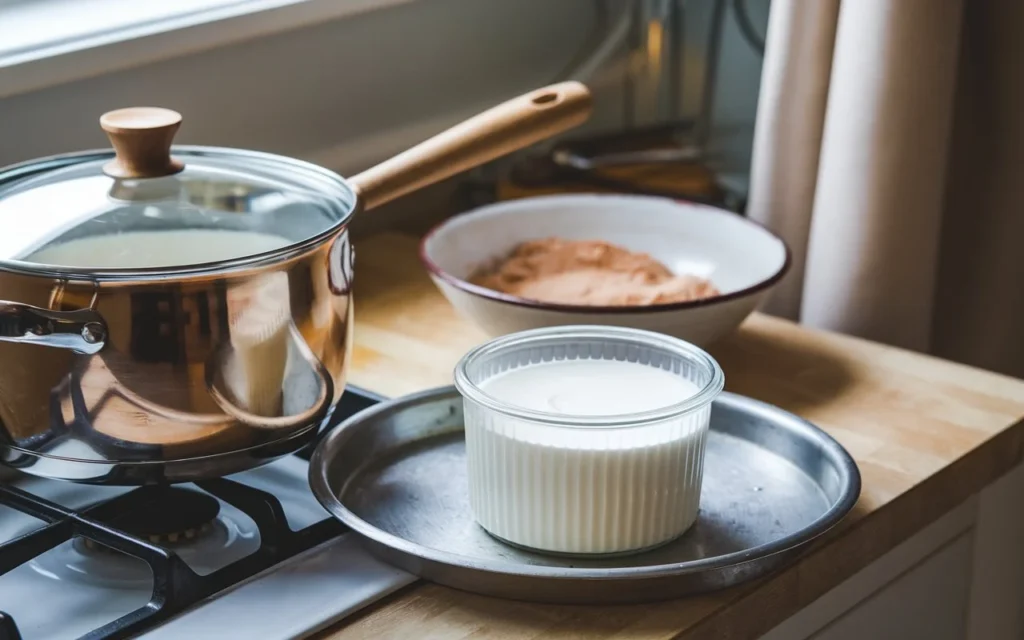
FAQs for How to Make Creme Fraiche Recipe
When it comes to making creme fraiche, questions are bound to come up. Here are the most common ones, with clear, simple answers to keep you on track.
Can I use yogurt instead of buttermilk for creme fraiche?
Yes, you can! Simply substitute buttermilk with plain, unsweetened yogurt that contains live active cultures. It may take slightly longer to ferment, but the result will be just as delicious.
How long does homemade creme fraiche last?
When stored properly in an airtight container in the fridge, homemade creme fraiche stays fresh for up to 2 weeks. Avoid double-dipping spoons, as this introduces bacteria that can shorten its shelf life.
Why didn’t my creme fraiche thicken?
If your creme fraiche stays runny after 24 hours, it could be due to:
Using ultra-pasteurized cream (which doesn’t ferment well)
Insufficient buttermilk (check your ratio)
A kitchen that’s too cold (aim for 70-75°F)
Can I freeze creme fraiche?
Yes, but it’s not recommended. Freezing alters the smooth, creamy texture, making it grainy when thawed. If you must freeze it, use it only in cooked dishes where texture matters less.
Can I use creme fraiche as a sour cream substitute?
Absolutely! Creme fraiche is a perfect substitute for sour cream. Use it in soups, dips, or baked potatoes. The key difference? Creme fraiche is creamier and doesn’t curdle when heated.
Is creme fraiche healthier than sour cream?
It depends on your definition of “healthier.” While creme fraiche has more fat, it contains healthier fats (like saturated fats) and more vitamins, including vitamin A and D. Sour cream is lower in calories, but it lacks the creaminess and heat stability of creme fraiche.
Conclusion: Mastering the Art of Homemade Creme Fraiche
Making your own creme fraiche at home is simpler than you might think. With just two ingredients — heavy cream and buttermilk — you can create a rich, smooth, and tangy topping that elevates your cooking. Plus, it lasts for two weeks, making it a practical addition to your kitchen.
Now that you know how to make creme fraiche recipe, why not try it in your favorite dishes today? From soups and desserts to dips and toppings, your kitchen will never be the same!

